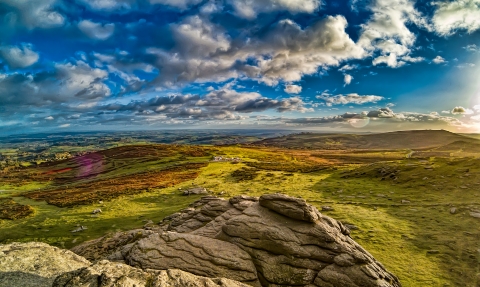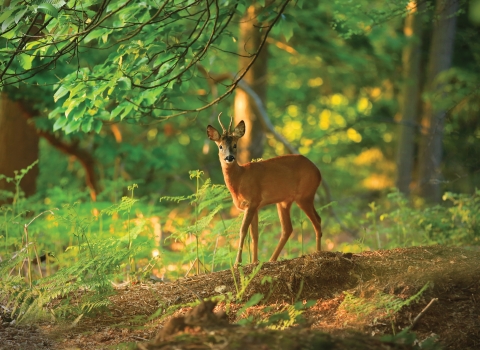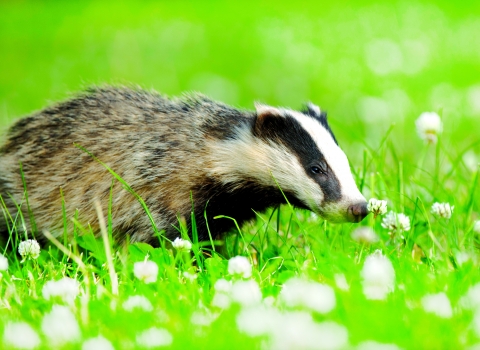The statistics surrounding the decline of our wildlife are shocking.
Since the 1970s, over half of our native species have suffered.
It's hard to visualise that - but try this.
- Can you remember the last time you saw a hedgerow alive with birdsong?
- Can you remember the last time you spotted a dolphin out at sea?
- Can you remember the last time you saw a hedgehog?
These things should be normal, but they are not. Every generation expects less, and sees less.
But before we know it, our natural world will be silenced by human activity.
To read more about the decline of wildlife in the UK, read the State of Nature report, which brings together data and expertise from over 50 organisations. It paints a picture of how wildlife is faring across the country.
Up until now, legislation has allowed us to protect pockets of land and habitats, but stronger and more progressive laws will enable us to actually restore wildlife. Something that is desperately needed.
We can make a difference. We are on the cusp of change.
A new Environment Act: a new hope.
Britain stands on the brink of its biggest ever shake-up of environmental rules. A new Environment Act is coming, and this is our opportunity to demand more for our natural world.
Critically, we need the Environment Act to give us:
Nature Targets
Legal targets for nature's recovery that politicians must ultimately achieve and regularly report on progress towards e.g. safer air to breathe in our citiesA Nature Recovery Network
A joined-up network of habitats that provides enough space for wildlife to recover and for people to thriveNature Watchdog
An independent body to help people challenge bad decisions made by Government and councils, which have a negative impact on wildlife and our natural environment.How would an Environment Act help here in Yorkshire?
-
Improve people’s access to nature, especially in towns and cities
-
Create new wild areas and wildlife corridors across the county
-
Keep our existing wildlife sites safe from harm
-
Protect our best wildlife habitats under the sea
-
Stop soils washing away into rivers and the sea
-
Improve air quality, especially in places like Barnsley and Leeds
-
Stop poisoning our rivers and streams with chemicals
-
Reduce emissions that are contributing to climate change
-
Protect people’s rights to a healthy natural environment
-
Avoid the loss of environmental protection laws after Brexit
Why is an Environment Act needed in England?
We need wildlife. Our natural world is valuable in its own right and is the foundation of our wellbeing - we depend on it and it depends on us. Without a healthy natural world the survival of humanity is at stake.
- Pollinators such as bees and wasps are absolutely essential for feeding our growing population.
- Wildlife plays an important role in balancing our ecosystem and provides stability to various natural processes
- Studies show that the natural world has a positive impact on our wellbeing, both physical and mental.
By creating more space for nature, we can create a better world for people and wildlife.
Wildlife is in trouble. From rivers and woodlands, to birds and flowers, our natural world is struggling. Over half the species assessed in the State of Nature report have suffered since the 1970s,. Without strong legislation, our plants and animals will continue to become more and more depleted.
What is a Nature Recovery Network?
At the moment, places that our wildlife can call home are becoming fewer, smaller and further apart. Many are damaged or developed on. This means that our wildlife become stuck in pockets, unable to reach the resources they need to survive and thrive.
A Nature Recovery Network is a joined-up network of existing and new natural spaces. These connect the green spaces together, allowing wildlife to move around and access everything they need.
These natural areas could be:
- on housing estates
- on farms
- in nature reserves
- along road verges and riverbanks
- in parks and gardens
- on office roofs
- in the hills
Nature Recovery Networks don't just make sense for wildlife. When wildlife is thriving, we do too. We will benefit from green areas, more diversity in our plants and animals and a happier, healthier natural world.
How does this fit in with what other charities and individuals are doing?
You may have noticed that there are a few voices speaking up for wildlife at the moment. The Wildlife Trusts are part of a coalition called the Greener UK with 12 other environmental charities campaigning for nature's recovery.
Each of these charities has agreed to the same set of messages, calling for new laws to help restore our wildlife. We are each running our own campaign, so that collectively we can reach as many people as possible.
Concerned about the threat to our wildlife, a few independent people are also acting for nature's recovery. For example, Chris Packham recently launched 'A People's Manifesto for Wildlife', suggesting a range of policies.
The general public are also becoming more and more active in speaking up for wildlife. You may have heard of SchoolStrike4Climate or Extinction Rebellion. These campaigns focus on the wider climate emergency. Protecting our natural world is an important part of this.



